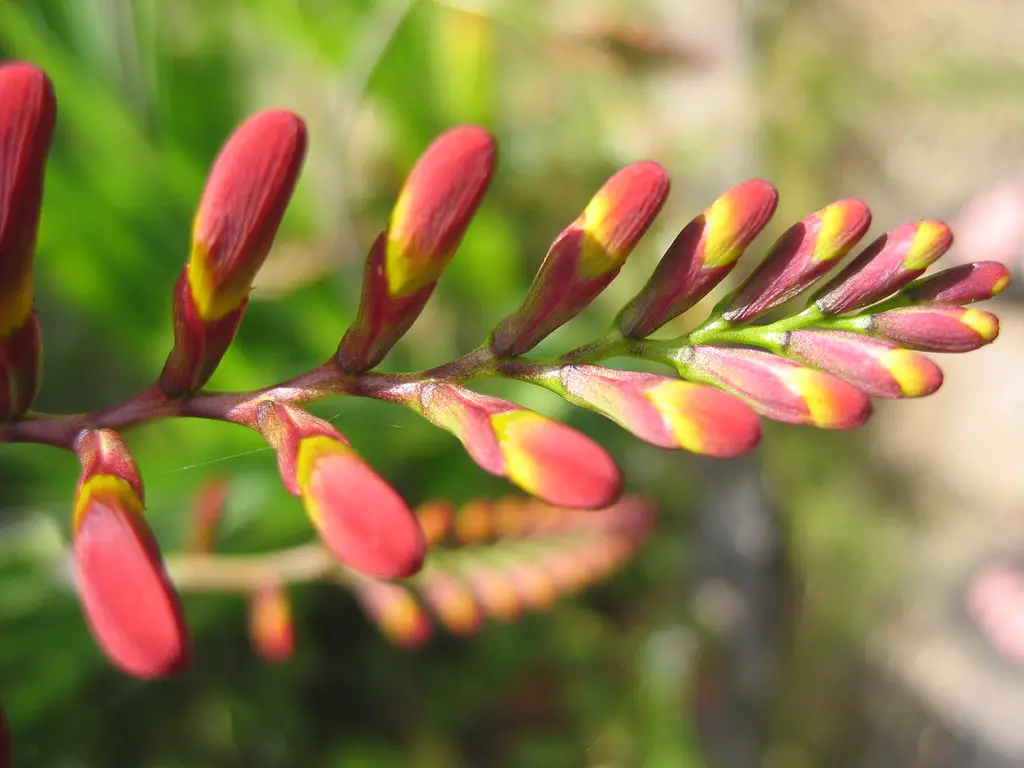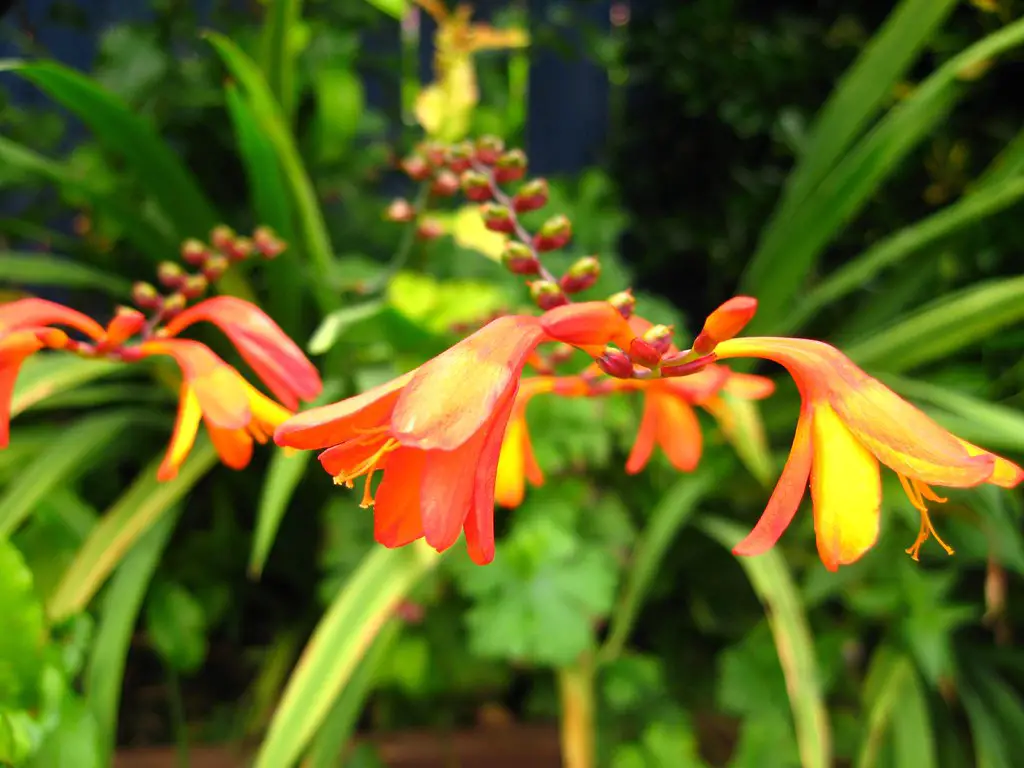Why Is My Crocosmia Not Flowering? Crocosmia is a popular flowering plant that is often used in cottage gardens because it can provide interest due to its upright foliage and striking flowers. However, most people who cultivate a garden for the first time often have a hard time with their Crocosmia not flowering, so how do you overcome this problem?
The crocosmia plant, also known as Montbretia, is a perennial flowering plant. This plant flowers in the summer months. When the plant is not flowering, it is likely because it is in a dry environment or does not have enough nutrients in the soil. The plant may also not be getting enough light.
There are a few things you can do to fix these issues. The first is to provide the plant with more moisture. The second is to foliar fertilize the plant with an organic fertilizer that is designed for flowers. Finally, you can also increase the amount of light that the plant receives in order to get the plant to start growing and flowering. It is important to note that these steps may not work every time.
If there is a need to move Crocosmias in the growing season it is important to ensure that the new location is relatively moist and contains plenty of nutrients. It is also important to water the plant on a daily basis for the two weeks after the plant has been transplanted.
This will encourage the plant’s roots to spread out into the surrounding soil quickly and become established. This will reduce the chances of the plant drying out.

How To Grow Crocosmia
Crocosmia is a small group of flowering plants that are in the iris family, Iridaceae. They originated in the grasslands of southern and eastern Africa. The plants are extremely showy and will give an exotic feel to your garden.
The plant forms long, erect leaves that are sword-like and have a form that is reminiscent of many iris plants. They produce delicate flowers that can be scarlet, red, and yellow summer flowers that typically last for about 1 to 2 months from mid-to late-summer. They are generally easy to grow given the right conditions.
The most important thing is to select a suitable site. Crocosmias can grow in partial shade but perform best in full sun as this will encourage flowering. The only exception to this is when plants are grown in locations where there are extreme summer temperatures. In these locations, the plant will benefit from being in partial shade as it will help to extend the flowering period.
In terms of soil conditions, Crocosmias prefer rich, moist but well-drained soil. The plant is somewhat drought tolerant but generally does not like really hot dry conditions. It is also advisable to select a location that is sheltered from windy conditions as that can also result in the plant drying out.
How To Plant Crocosmia Corms
Crocosmia corms must be planted in spring after all danger of frost is gone. Make sure to plant in warmer weather when soil and ground temperature are greater than 50°F (10°C). When planting crocosmia corms they should be planted at a depth of 2 to 3 inches in clusters of 6 to 8. These clusters should be spaced approximately 18 to 24 inches apart as this will make it easy to manage weeds.
When placing the Crocosmia corms in the ground ensure that the pointed end is pointing upward. Once in position cover them and press the soil down around the roots, then water the planted area thoroughly. Add organic and dry material on top of the soil to keep it moist which will protect the crocosmias. This can be done during the winter season as well.

How To Look After Crocosmias
Once planted apply water during the growing season once a week. When the plants begin to produce flowers it is important to ensure that the spent blooms are removed to encourage the plant to produce additional flowers. To remove the flowers cut them off at the point at which the stems of the flowers meet the leaves.
Once the flowering period is completed it is important to ensure that the leaves are allowed to die back naturally. This will allow the plant to continue to photosynthesis sugars and put the sugars back into its bulb which will provide energy for the following year’s flowers.
The foliage may be cut back to the ground when the leaves have withered and are brown in color. Cover the crocosmia bed with a 1-inch layer of compost after the plants die back. The compost will help feed the soil as it will break down over winter and replenish the nutrients in the soil.
As crocosmia multiplies over time it is advisable to divide congested clumps after the flowering period. This typically needs to be done every three to five years to ensure that the corms continue to produce large numbers of flowers.
In cooler regions, you may need to mulch the corms to protect them from frost however in really cold climates it may also be necessary to lift the corms over winter. As Crocosmias are native to Africa they are used to mild winters that are relatively dry. In places like UK and Ireland or the northern parts of the united states, it is generally advisable to lift the corms.
How Do You Store Crocosmia Corms In Winter?
Crocosmia corms should be kept in a location that is cool but not does allow the corms to freeze. To avoid the corms from dehydrating over the winter months it is advisable to pack the corms in slightly moist peat moss or sawdust.
If you are unsure about the level of moisture required the simplest way to get the moisture level just right is to moisten the packing medium and ring it out with your hands until no water droplets can be exacted from it. The corms can then be packed into the storage medium. It is advisable to check the corms periodically through the winter to ensure that the corms don’t go moldy.
Related Articles
Are Zinnia And Dahlias The Same Plant? What’s The Difference?
Why Are My Cosmos Seedlings Leggy? And What To Do About It
What’s The Difference Between A Daisy And A Sunflower?
How To Tell If Dahlia Tubers Are Dead
